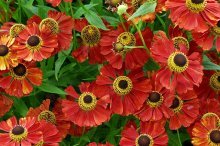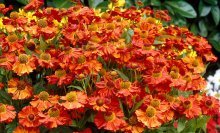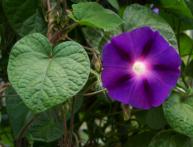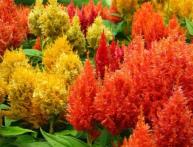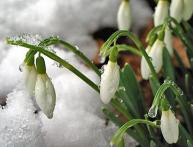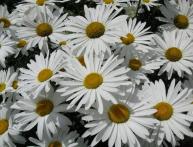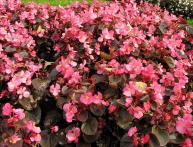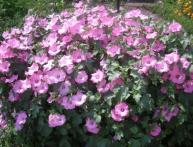Helenium autumn, planting features and proper care
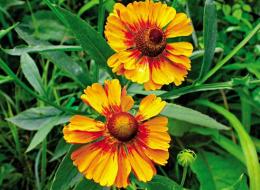
Helenium autumnalis is a herbaceous plant with branching stems. The leaves have a hairy structure and are sometimes bare. Also, the leaves have a sessile position and a medium-sized shape. This flower does not have the form of a bush; most often it is presented in the form of closely seated individual plants. The height of the stems can reach up to 160 cm.
The inflorescences are presented in the form of baskets collected in corymbose flowers. The fruit of the plant has an oblong cylindrical achene with slight pubescence. Helenium blooms from July to September. Among all types of plants, there are also garden varieties, with yellow-red hues.
Content:
Features of autumn helenium
The peculiarity of autumn helenium is the death of the flower along with the stem and rhizome. This is a very light-loving plant that prefers fertile soil. Some varieties of autumn helenium do not need feeding at all.
Therefore, if a flower is fertilized abundantly, its uncontrolled growth may occur. To ensure lush flowering of the plant, you need to promptly trim the wilted stems. And in order for the flowers to be branched and densely located, it is necessary to pinch off the tops of the shoots.
Planting and care
Landing helenium should be started in late autumn.Before planting, the soil must first be fertilized with compost, manure or some other rotten organic matter. As the flower grows, it must be periodically divided into stems. If this is not done, the plant’s rosettes will begin to freeze, and the soil will be depleted. Experienced gardeners recommend planting helenium near fences and other decorative elements. The flower also looks good in a bouquet with autumn asters.
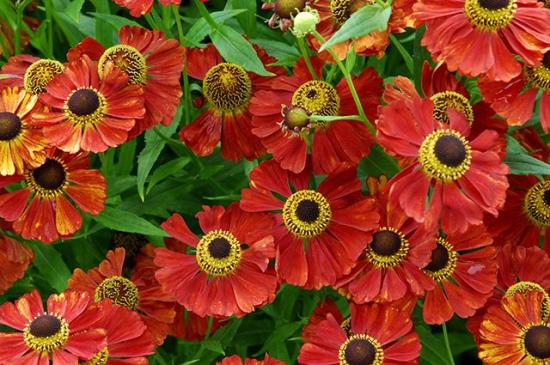
This plant should be grown in full light. Even though the flower is drought-resistant, it must be watered regularly. Helenium also needs to be fertilized with various mineral fertilizers. Caring for the plant also involves periodically loosening it to a depth of seven centimeters. If the helenium has a single planting, then you need to form a bush.
Reproduction
Helenium autumnalis reproduces by seeds and division of stems. It is better to divide the plant in the month of May. To do this, slightly grown rosettes should be planted. In the process of digging up the bush, the rosettes begin to separate almost independently. In the spring, helenium can be multiply and stem cuttings. In order for young shoots to quickly and well take root, they must be placed in a greenhouse.
Propagation by seeds is a little more difficult, since they have a fairly low germination rate. Based on this, it is better to sow seeds at the very end of autumn. The seedlings will flower next year. Before sowing seeds, they must undergo stratification. To do this, the seeds should be mixed with wet sawdust and left in this state for three weeks.
Seeds are stored in wet sawdust at a temperature of about three degrees above zero. After this, the seeds are placed in a special substrate until germination.
The next stage of propagation by seeds is diving. It must be produced in such a way that there are no more than five seedlings per square meter. You also need to remember that helenium cannot tolerate numerous transplants, so it is advisable to immediately assign the plant to a permanent site.
If you plan to plant seeds in open ground, then this should be done in May, when the ground has warmed up well. In general, autumn helenium is considered a frost-resistant variety, but prolonged frosts can weaken the already weak root system. To prevent damage to the flower, three weeks after sowing, it must be covered with plastic wrap. Also, sowing can initially be carried out in a greenhouse. After picking, the plants cease to be vulnerable and are not afraid of low temperatures.
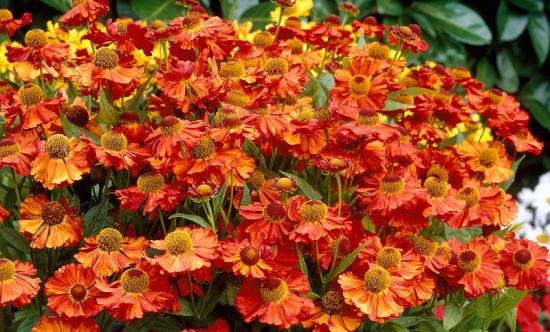
Another way to propagate autumn helenium is by cutting green shoots. Young ones are used for reproduction annuals shoots, the average height of which is 10-15cm. The top of the shoot is cut off and rooting occurs. To ensure that the tops take root well, they can be covered with glass jars or plastic bottles. When the first leaves appear, jars and bottles can be removed.
After the plant is planted in its permanent place, you need to mulch the soil. This should be done with humus or peat. To prolong the flowering of the plant, you need to remove the inflorescences with a piece of the stem. The plant should be divided no more than four years ago, otherwise it will be weak and not frost-resistant.
Pests and diseases
Most dangerous pest, infecting helenium is a chrysanthemum nematode. The nematode worm damages leaves and flower buds. All flowers that have been affected by the chrysanthemum nematode must be dug up and destroyed. If this pest was noticed on the site even before planting, then the soil should be treated with ground sulfur or slaked lime.
The plants themselves are also treated at the end of July. This is done using a solution of thiophos. As for diseases, autumn helenium is practically resistant to infections; the only thing that can cause flowers to suffer is waterlogging. Therefore, you always need to monitor the water balance of the soil.
Video review of the autumn helenium flower:

